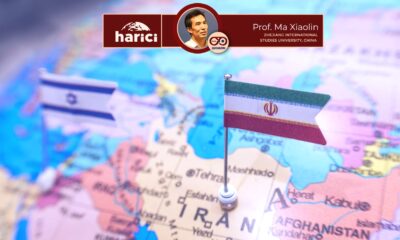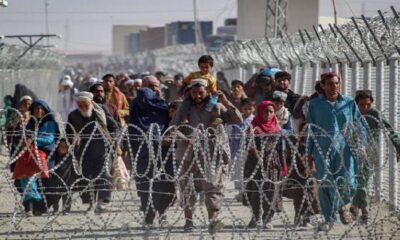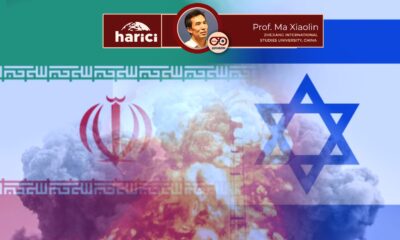Asia
Scrambling for power: Differences between the Haqqani Network and the Taliban
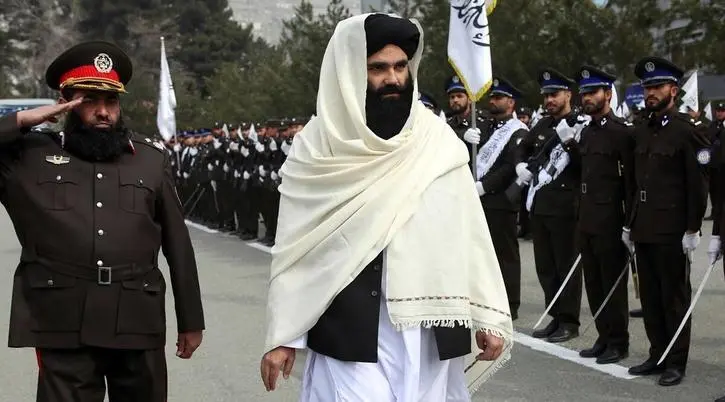
For the past 20 years, the Haqqani Network has been fighting alongside the Taliban for a common goal and has carried out the bloodiest attacks across the country. However, in these 20 years, the responsibility of all the attacks of this network was taken by the Taliban, and they tried not to recognize this network as a group separate from the Taliban.
Although the name of the Haqqani network was mentioned a lot in the media, the Taliban spokesman always had said that all are members of the Taliban and that there are no separate structures of the Haqqani’s and the Taliban.
During over 20 years, the Taliban managed to introduce the Haqqani network as a part of itself, and the responsibility of all the attacks of Haqqani’s were assumed by the Taliban spokesperson.
Even after the collapse of the republic system, following the withdrawal of US troops and the return of the Taliban into power, Taliban officials and leaders of the Haqqani network tried hard to hide the identity of their network and consider themselves part of the “Islamic Emirate” of the Taliban.
But with the passage of time and for various reasons, the Haqqani network has returned to its origin and tends to reveal its hidden identity. This network has recently released a series of videos of its fighters who have carried out suicide attacks in the past 20 years, targeting the then Afghan security forces and the foreign troops across Afghanistan.
Haqqani network is willing to reveal its hidden identity
In the latest video published by the Haqqani network, had showed Sirajuddin Haqqani, the leader of the Haqqani network and the current Interior Minister along with his brother Badruddin Haqqani where both saying goodbye to a young suicide bomber and explaining the attack plan to him.
Badruddin was the youngest brother of Sirajuddin, whom the Taliban’s official website identified as the initiator of the suicide attacks, and according to the Taliban, he had designed and implemented 75 suicide attacks, including the attack on the Intercontinental Hotel in Kabul. His name was in the US blacklist and eventually he was killed in an American drone attack in 2012.
Though, apparently the Haqqani network is now part of the Taliban government, but in addition to the military structures, its propaganda section is also separate. Last Thursday, Haqqani network commemorated the death anniversary of Maulvi Sangin, the former military officer of this network in Paktika province. This was despite the fact that senior Taliban officials did not even write anything about him on social platforms and did not even make a small reference to him. But members of the Haqqani network commemorated this day by releasing a documentary film on the life of Sangin and called him a national hero.
Taliban didn’t broadcast Haqqani commander documentary film in national tv
The spokesperson of the Kabul Police Command, who is a member of the Haqqani network and a member of Molavi Sangin’s family, called him his role model. However, this documentary film was not broadcasted on the national television under the control of the Taliban, but in Shamshad, a private tv channel and on big screens in the provinces of Kabul, Khost, Nangarhar and some other provinces.
Sangin, originally from Zirok district of Khost province and from the Zadran tribe. He was born in North Waziristan and had close relations with the Pakistani Taliban.
He had a history of war not only in Afghanistan, but also in Waziristan, and he was involved in armed battles with different people. His name was on the US blacklist, he was killed by an American drone on September 9, 2013 in North Waziristan of Pakistan.
He was one of the important commanders of the Haqqani network. US soldier Beau Bergdahl, who was later exchanged with five current senior Taliban officials, was captured by the fighters under Sangin’s command, which the Haqqani network considers his greatest heroism. The Haqqani network held Bergdahl from 2009 to 2014. The Haqqani network called Sangin a heroic fighter in the documentary it made about him.
But the noteworthy point is that in this documentary he is not introduced as a member of the Taliban, but is called a member of the Haqqani network or the Haqqani group.
This is despite the fact that during the last 20 years, the Haqqani network did not consider itself as a separate armed structure from the Taliban. Meanwhile, in this documentary, an audio file of Rahimullah Yousafzai, a former BBC reporter, is played, calling him one of the important commanders of the Haqqani network.
Internal dispute between the Taliban and Haqqani network is getting serious
In parts of the documentary, videos of his battles are played. In one of these videos, he is seen next to Baitullah Mehsud, the former leader of the Tehreek-e-Taliban Pakistan (TTP). In this documentary, all the talks about him were done by members of the Haqqani network, many of whom now hold various positions in the Taliban’s Ministry of Interior in Kabul.
In this documentary, no one except members of the Haqqani network talked about Sangin. At the end of the documentary, he is mentioned as a member of the Haqqani network, not a member of the Taliban.
The point is that after three years since the return of the Taliban into power, and internal disputes among the Taliban and Haqqani over government positions, now the Haqqani’s are apparently trying to reveal their true identity in the Taliban government.
The frequent release of videos of suicide fighters by the Haqqani network may be a message to the Taliban that the heavy burden of the war is on the shoulders of this group and the regime should have a bigger share of it. Previously, the leader of the Haqqani network criticized the monopoly of power and considered this practice as the detriment of the Taliban government.
After 20 years of the Haqqani network defending its identity and the Taliban’s indifference to the killed commanders of this group, even to the extent that the national television controlled by the Taliban did not allow the broadcast of a documentary of one of the commanders of this network, it shows that the hidden battle between the Haqqani network and the Taliban is unfolding and expanding.
Asia
Chinese navy chief and top nuclear scientist expelled from legislature
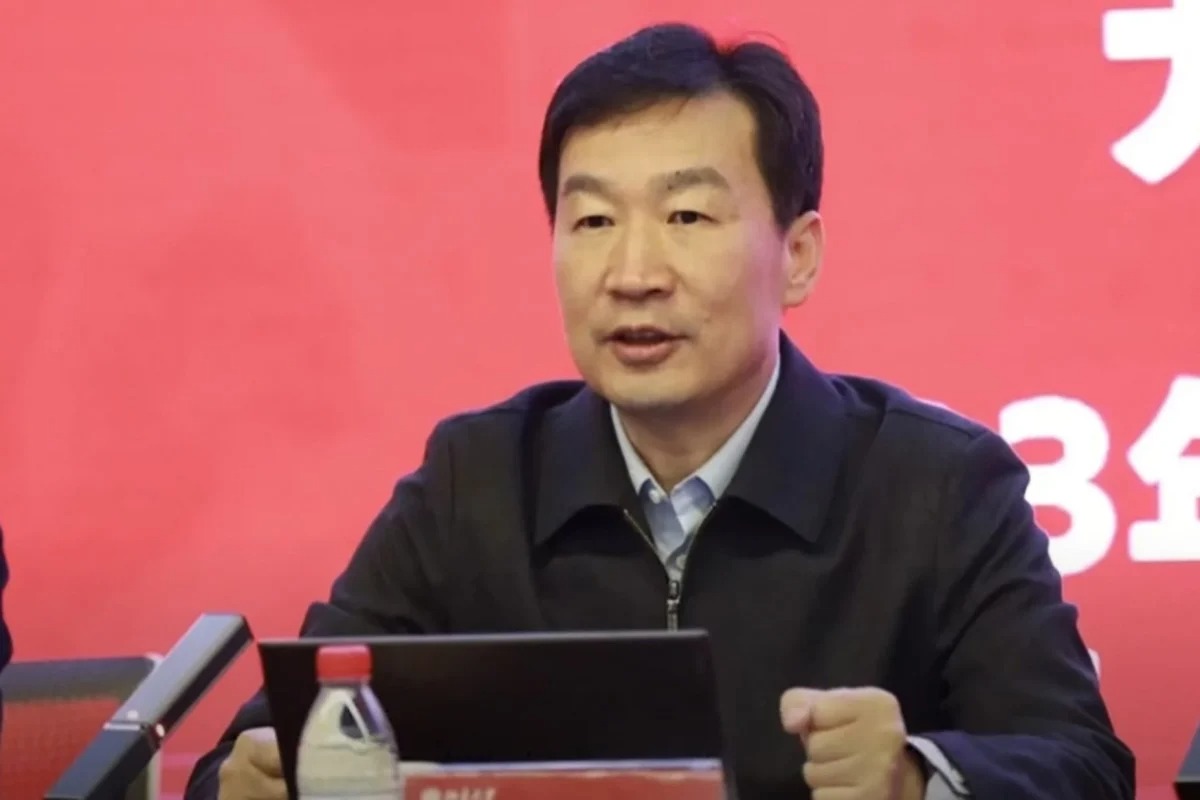
The chief of staff for the People’s Liberation Army (PLA) Navy, Vice Admiral Li Hanjun, and Liu Shipeng, the deputy chief engineer of the state-owned China National Nuclear Corporation, were removed from their positions in the country’s legislative body.
Li is the latest in a series of PLA generals and a handful of defense industry executives implicated in a widespread investigation within the military.
In a statement on Friday, the NPC Standing Committee announced, “The Navy Soldiers’ Congress has decided to remove Li Hanjun from his post as a representative to the 14th National People’s Congress.”
The Gansu People’s Congress also dismissed Liu Shipeng from his role as an NPC deputy.
Additionally, the Standing Committee revealed it had voted to remove Miao Hua, a former top general who previously oversaw the PLA’s ideological work, from the Central Military Commission (CMC), China’s highest military command body led by President Xi Jinping.
The removal of Li and Liu from their NPC memberships suggests they are facing serious disciplinary action.
China typically remains silent about purges within the military, and announcements from the NPC are one of the few indicators of such campaigns.
There is little public information available about Li and Liu, as both have worked in sensitive positions.
Before becoming the navy’s chief of staff, Li, 60, was the deputy director of the CMC’s Training and Administration Department. He was appointed to this role after serving for a year in the CMC’s Office for Reform and Organisational Structure.
In 2014, he was promoted to vice admiral upon his appointment as commander of the naval base in Fujian province, where Miao also spent a significant part of his career. At that time, he was the director of training at the China Naval Command College and was soon promoted to president of the school.
According to official media reports, nuclear scientist Liu was born into a family that “served China’s nuclear dream for three generations.”
As the deputy chief engineer at CNNC, which oversees all aspects of China’s civil and military nuclear programs, Liu also served as the Communist Party secretary and president of CNNC’s “404 base” in Gansu.
Covering an area of over 1,000 square kilometers, the base was established in 1958 and is the country’s first and largest nuclear research center. It played a crucial role in the development of China’s first atomic bomb in 1964 and its first hydrogen bomb three years later.
This secretive base is still considered a key hub for China’s nuclear deterrence and nuclear industry.
According to statements from provincial authorities, Liu was named “Gansu’s outstanding entrepreneur” in 2023.
Asia
China, US reach agreement on export controls
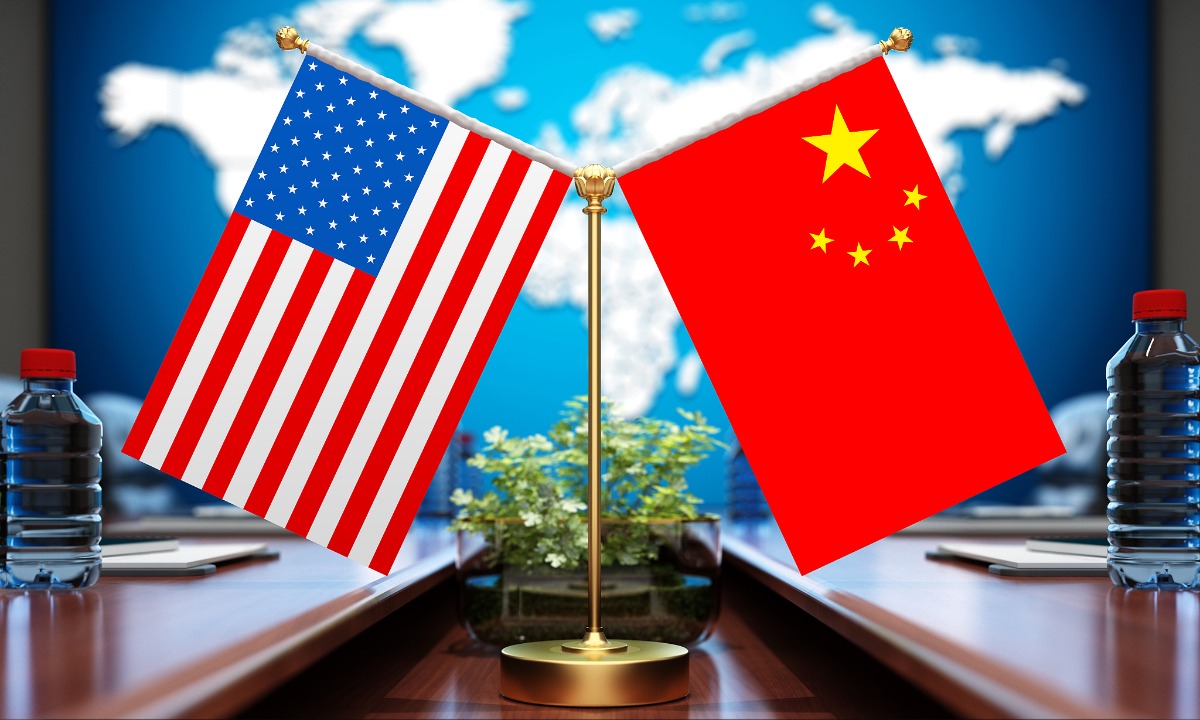
The Chinese Ministry of Commerce announced on Friday afternoon that Beijing and Washington have remained in close contact since the two-day trade talks in London earlier this month, confirming the details of a framework agreement.
“China will review and approve export applications for controlled items in accordance with its laws and regulations, and the US side will, in turn, lift a series of restrictive measures against China,” the ministry stated.
“We hope the US side will cooperate with China in line with the important consensus and conditions established during the conversation between the two presidents on June 5,” the statement continued.
On Thursday, US President Donald Trump said the US had “signed” a trade deal with China the previous day, without providing details.
“We signed the deal with China yesterday, right? We signed the deal with China,” Trump said at a White House event introducing a budget law. “With the China deal, we are starting to open up China,” he added.
He also mentioned that a “very big” deal, likely with India, would be signed soon.
Rare earth elements
Following the event, US Commerce Secretary Howard Lutnick told reporters that the US and China had signed an agreement codifying the terms decided upon in previous trade negotiations.
“They will deliver rare earth elements to us,” Lutnick said in a televised interview with Bloomberg, adding that if this commitment is fulfilled, Washington will lift its “countermeasures.”
Rare earth elements, essential for producing high-tech products, including those for the defense industry, were a major point of contention in the trade talks. China holds a near-monopoly on the supply of these minerals due to its massive share of global refining capacity.
Responding to a question on Thursday about rare earth exports, ministry spokesman He Yadong said China had approved a “certain number” of applications and would “continue to strengthen” the review and approval process for eligible applications.
He added that Beijing is willing to “strengthen communication and dialogue” with other countries on export controls and actively promote appropriate trade.
Lutnick also stated that the US plans to reach agreements with 10 major trading partners in the coming weeks. The deadline for countries to negotiate trade terms before higher tariffs are reinstated was July 9, following a 90-day suspension of import tariff hikes announced on April 2.
The two negotiating teams concluded the London talks by announcing they had agreed “in principle” on a “framework” that both sides would take home for their respective leaders to review, as they sought to get their uneasy truce, signed last month in Geneva, back on track.
The negotiations began after a highly anticipated phone call between Xi Jinping and Trump, which seemingly ended an intractable stalemate.
In the weeks following the initial agreement in Switzerland, Washington claimed China was restricting exports of critical minerals, while Beijing reacted to US restrictions on semiconductors and threats to impose visa barriers on Chinese students.
Asia
China hosts SCO defense ministers on warship amid regional tensions
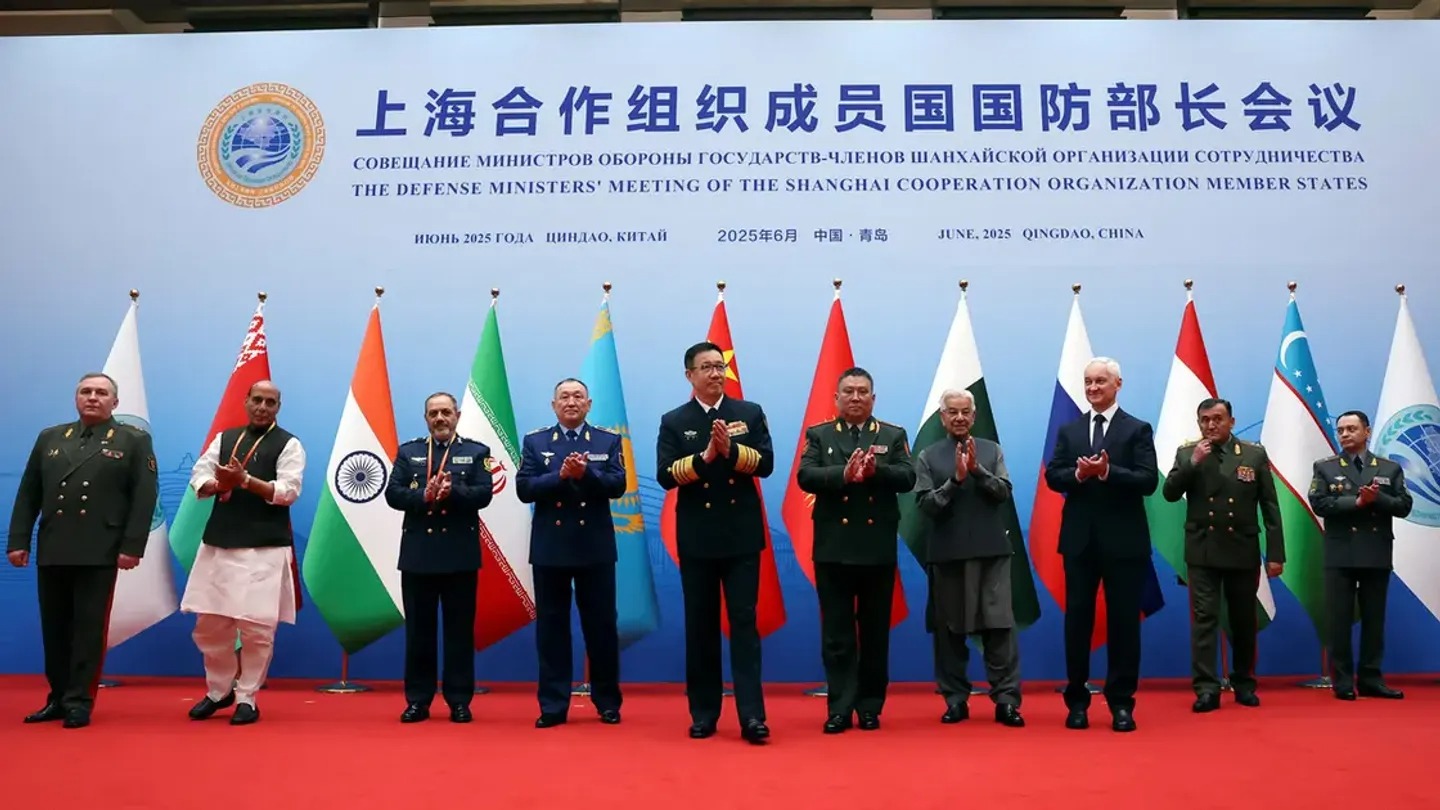
Chinese Defense Minister Dong Jun hosted his Iranian counterpart and other high-level defense officials from Shanghai Cooperation Organisation (SCO) member states aboard an advanced Chinese warship, just days after the US bombed Iran’s nuclear facilities.
Iranian Defense Minister Aziz Nasirzadeh was among the defense officials welcomed by Dong on a military vessel in the coastal city of Qingdao, China, as part of a two-day SCO defense ministers’ meeting that concluded on Thursday.
According to Chinese state television CCTV, Nasirzadeh and other defense officials toured the People’s Liberation Army (PLA) Navy’s Type 052D destroyer, the Kaifeng, and later attended a reception on the ship’s deck.

Aboard the ship, Nasirzadeh thanked Beijing for “supporting Iran’s legitimate position following the recent attacks” by Israel and the US.
“We hope that China will continue to stand on the side of justice, help maintain the current ceasefire, and play a greater role in de-escalating regional tensions,” Nasirzadeh said, according to Xinhua.
In his address to the assembled ministers, Dong reportedly stated that “unilateralism, protectionism, and hegemonic and bullying acts are on the rise, seriously disrupting the international order and becoming the greatest source of chaos and conflict.”
Dong called for closer cooperation within the United Nations, the SCO, and other multilateral frameworks, urging members to unite with “more like-minded forces” to defend international justice and maintain global stability.
“SCO countries must remain true to the organization’s founding ideals, uphold the ‘Shanghai Spirit,’ and deepen practical cooperation in all areas,” Dong said. “With stronger actions, we can jointly safeguard a peaceful environment for development,” he added.
The event followed the US attacks on three of Iran’s key nuclear facilities on Saturday, which Beijing strongly condemned.
The Chinese Foreign Ministry stated that the attacks on nuclear facilities under the supervision of the International Atomic Energy Agency seriously violated the UN Charter and its principles.
Additionally, the SCO meeting coincided with a NATO leaders’ summit in The Hague. In a statement from The Hague, US President Donald Trump announced that the US would hold talks with Iran about a possible nuclear deal “in the coming week.”
Bilateral Talks
According to Xinhua, the Chinese defense minister later held separate bilateral meetings with the defense ministers of Belarus, Pakistan, Kyrgyzstan, and Russia. The state news agency reported that all parties appreciated Beijing’s efforts and significant contributions to developing SCO operational mechanisms and deepening inter-sectoral cooperation during its rotating presidency. They also expressed a strong will to further consolidate and expand military ties.
Pakistani Defense Minister Khawaja Asif praised Beijing’s role in de-escalating tensions. “Pakistan highly values its robust friendship with China and is ready to work together to implement its three global initiatives, deepen military cooperation, and help maintain regional peace and stability,” he said.
For Russian Defense Minister Andrei Belousov, this year—the 80th anniversary of the victory in World War II, the Chinese people’s war of resistance against Japanese aggression, and the world’s anti-fascist war—presents an opportunity to deepen bilateral military relations. “In line with the consensus of our leaders, we will intensify strategic communication and cooperation and contribute to global strategic stability,” he said.
Meanwhile, Indian Defense Minister Rajnath Singh also attended the Qingdao meeting. This marked the first visit by an Indian defense minister to China since the deadly border clash between the two countries in 2020.
Military trust
According to the Chinese Ministry of Defense, the SCO defense ministers’ meeting is one of the key events held during China’s rotating presidency of the SCO this year. The ministers, along with representatives from the SCO and regional anti-terrorism bodies, gathered to further strengthen military trust and deepen practical cooperation among member states.
The SCO, a 10-nation bloc comprising China, Russia, Kazakhstan, Kyrgyzstan, Tajikistan, Uzbekistan, Pakistan, India, Iran, and Belarus, currently covers approximately three-fifths of the Eurasian continent and about 43% of the world’s population.
The Beijing meeting, held under the rotating presidency of the Shanghai Cooperation Organisation, highlighted China’s role as a significant international actor and the importance Tehran places on its relationship with Beijing, even as China has largely remained on the sidelines of the Israel-Iran conflict.
During a regular press conference at the Chinese Ministry of Defense on Thursday, when asked if Beijing was considering providing military support to Iran as an SCO member, ministry spokesman Zhang Xiaogang told CNN, “China is ready to cooperate with all parties to play a constructive role in maintaining peace and stability in the Middle East.”
Kaifeng destroyer
The Kaifeng destroyer, where the meeting’s reception was held, is the sixth vessel of the extended Type 052D variant and serves in the North Sea Fleet. Commissioned in April 2021, the ship is approximately 159 meters (521 feet) long, weighs 7,500 tons, and is equipped with 517C anti-stealth radar. Its expanded deck allows for the landing of the PLA Navy’s Z-20 helicopters.
The warship has conducted numerous long-range exercises, including a passage through the Tsushima Strait in April, as part of Beijing’s growing operational presence in the western Pacific.
It was publicly displayed during the 74th-anniversary celebrations of the Chinese navy in Qingdao in 2023.
-
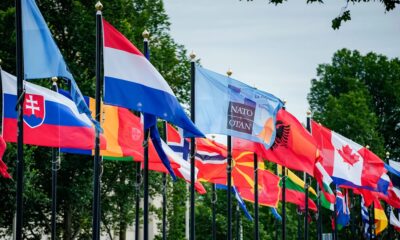
 Diplomacy2 weeks ago
Diplomacy2 weeks agoNATO summit focuses on arms race in the Silicon Valley age
-

 Europe2 weeks ago
Europe2 weeks agoIsrael-Iran conflict postpones EU plan for Russian oil sanctions
-
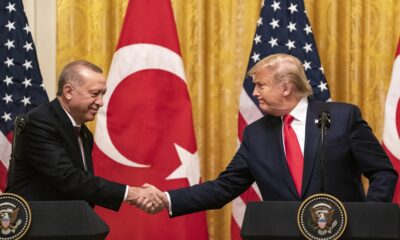
 Diplomacy2 weeks ago
Diplomacy2 weeks agoErdoğan to meet Trump at NATO summit to mend relations
-
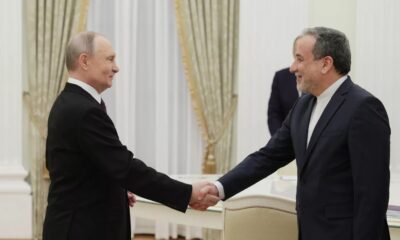
 Diplomacy2 weeks ago
Diplomacy2 weeks agoIranian foreign minister travels to Moscow for Putin talks after US strikes
-
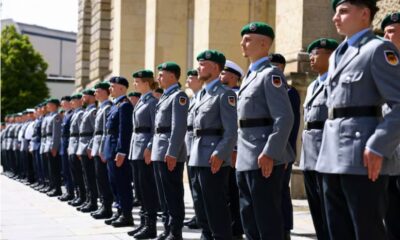
 Europe2 weeks ago
Europe2 weeks agoGermany to expand military with 11,000 new personnel this year
-
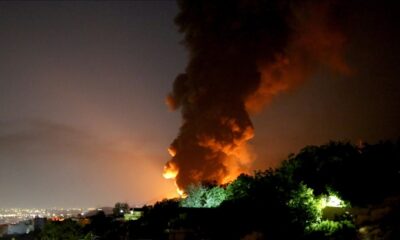
 Middle East2 weeks ago
Middle East2 weeks agoUS bombs Iranian nuclear sites, sparking fears of wider conflict
-
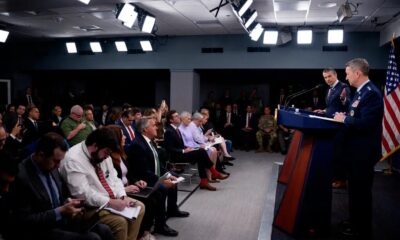
 America2 weeks ago
America2 weeks agoPentagon divided over military priorities in Asia and the Middle East
-
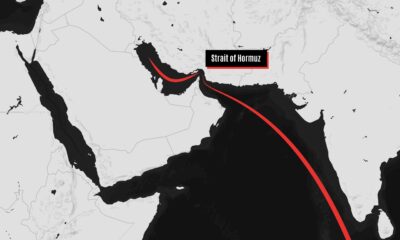
 Asia2 weeks ago
Asia2 weeks agoUS cries to China as Washington begins airstrikes in Iran


